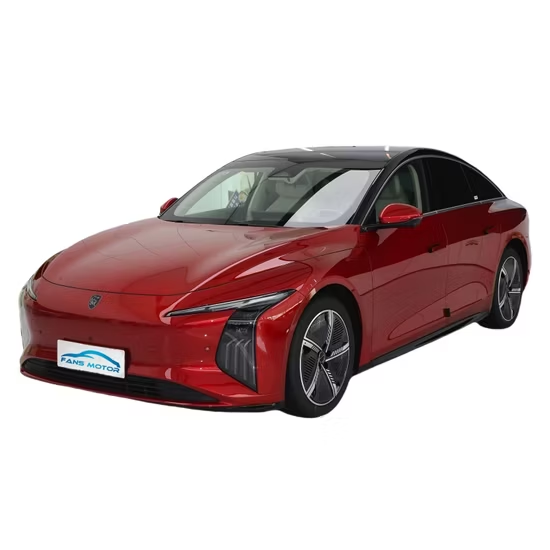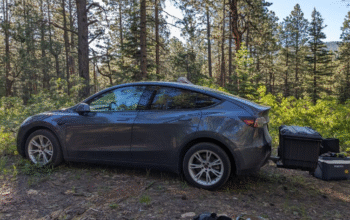When we encounter the concept of cheap cars, the automatic vision that comes to mind is geerally simple transportation – with no frills, fashion or technology. However, entering 2025, the notion of a stripped-down simple budget car is being turned upside down. With more competitive pressure than ever in the compact and affordable car segments, not only are small and cheap vehicles beating the comptition and growing in number, they’re also coming with technology and value that even a couple years ago, would have been unimaginable in such vehicles.
Let’s look at some simple reasons why almost every cheap car in 2025 is smarter than you think.
1. Advanced Safety Tech Is Becoming Standard
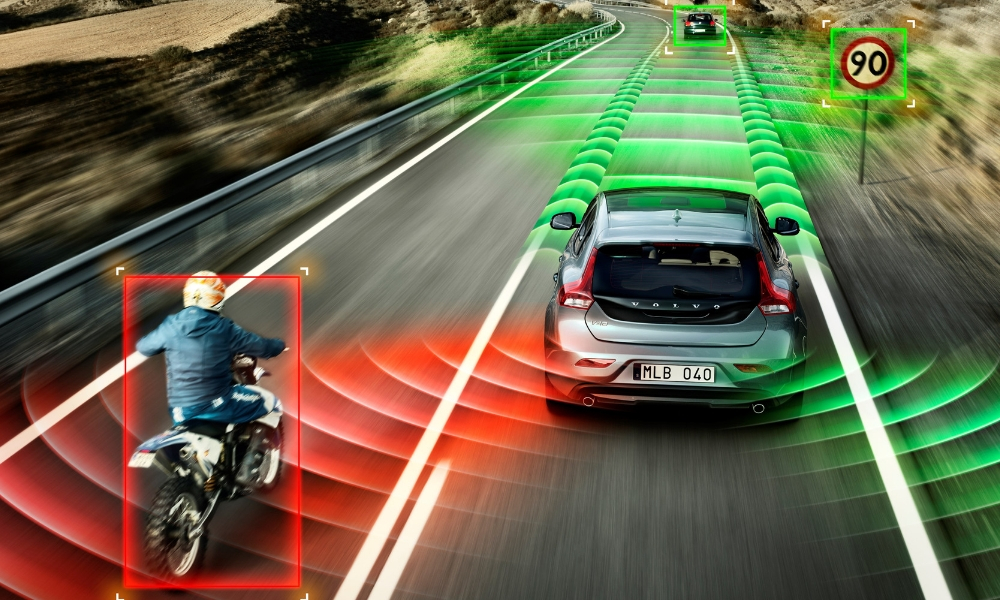
One of the largest changes when it comes to affordable vehicles is their safety technology. Just a couple years ago, models such as forward collision warning, lane keep assist, and automatic emergency braking were only available in premium vehicles or at the highest trim. However due to safety regulations and consumer demand, tons of 2025 budget vehicles come standard with safety features.
The 2025 Kia Rio and Toyota Yaris subcompacts are good examples of conventional cars that come equipped with advanced driver assistance systems (ADAS) in their base trim models. These ADAS systems provide safety items that cover such features as pedestrian detection, blind-spot mnitoring, and rear cross-traffic alert. Car makers are aware that because safety sells, they can provide drivers with handy safety features at very low cost.
2. Better Fuel Efficiency Through Smarter Engineering

Fuel economy has long been a consideration in the budget sector, but in 2025 it is not simply a downsizing of engines. Contemporary engineering and lightweight materials have enabled vehicles to become far more aerodynamically efficient while still providing an enjoyable driving experience.
Cars in this category (2025 Hyundai i10; Mitsubishi Mirage) now include fatures such as variable valve timing, properly adjusted gear ratios, and engine start-stop technology to maximise each drop of consumed fuel. In fact, some models have now surpassed the mileage of previous hybrids – without the associated hassle and expense of electric motors.
So, you absolutely should be able to go further for less fuel. This is why they suit urban commuting and long-distance drivers alike.
3. Infotainment Isn’t Just for Luxury Cars Anymore
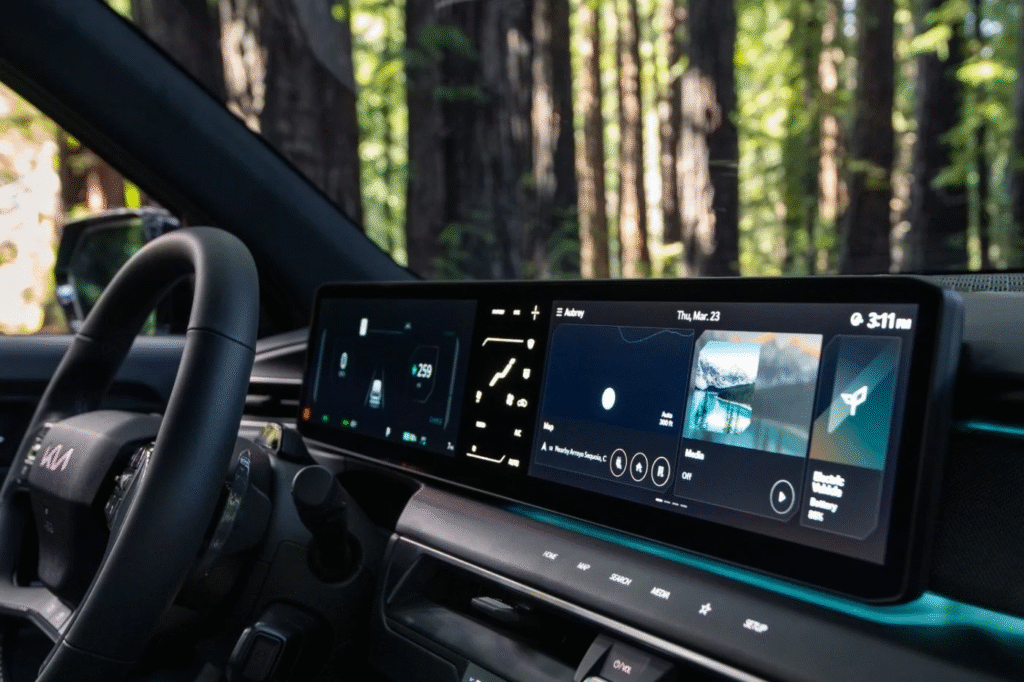
Not long ago, a cheap car came with a CD player and basic radio at best. Not anymore!
As of 2025, even the cheapest cars come with touchscreen infotainment systems, Apple CarPlay, Android Auto, Bluetooth connectivity, and USB-C ports. The digital experience that used to belong to only high-end models is now being relegated to lower-priced alternatives.
Consider the Dacia Sandero or Suzuki Celerio—both come sold for under $12,000 in many markets, yet they have smart infotainment setups that rival mid-size sedans. That means you can have Google Maps for navigation, stream your favourite music, and take hands-free calls, all in a “cheap car.”
4. Smarter Packaging and Space Efficiency

Another area where budget-friendly cars are making leaps forward is in clever space management. With smart engineering and small drivetrains, small hatchback cars now offer surprisingly roomy interiors.
The 2025 Honda Fit and the Renault Kwid are ideal examples. They have modest footprints, yet both have flat-folding rear seats, deep cargo, and intelligent storage – all suitable for either small families, city-living, and even students that spend lots of time on-the-go.
Designers are better utilizing every inch of space to allow for commodities, so a low-end car doesn’t feel low-on-space or low-on-comfort.
5. Lower Running Costs Through Smarter Simplicity
One of the underrated facts about budget vehicles in 2025 is that they are not just cheaper to purchase—these cars are also cheaper to keep running. Manufacturers are paring down intricate & complex car parts and systems, in favor of basic systems that are both simpler to repair, and more durable in the long term.
Instead of complex turbo motors that use premium fuels, and expensive repairs, many budget vehicles use naturally aspirated motors, or simple mild hybrids which are easy to work on. Replacement parts are cheaper, and many models provide several years of generous warranty coverage on the replacement parts and the vehicle, such as five or seven years of protection.
In other words, in the grander scheme of ownership, budget vehicles continue to make financial sense—not solely in the showroom, but over the years of ownership.
6. Smarter Connectivity and Remote Access
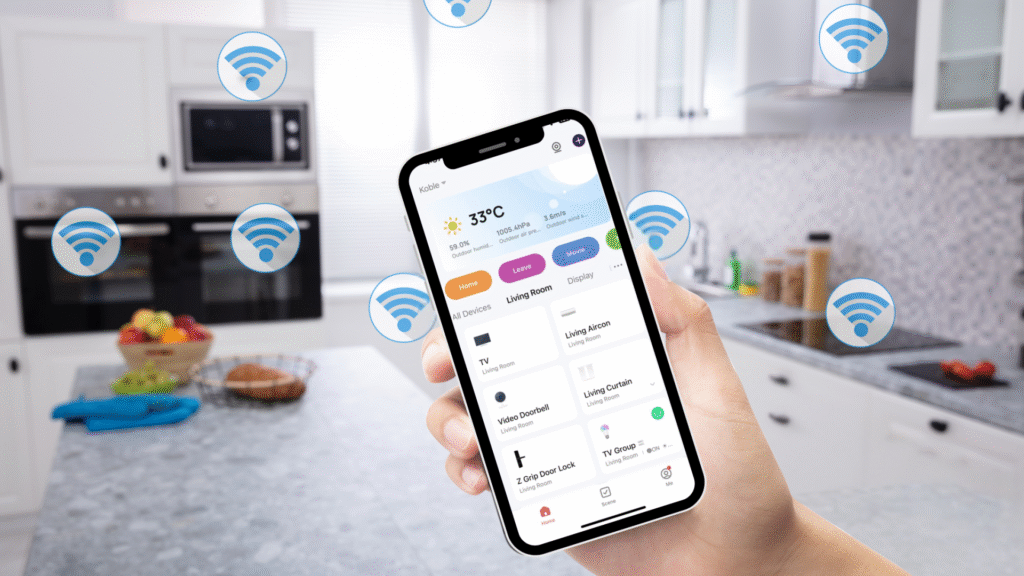
Smart technology is not limited to infotainment—connectivity is a growing theme even in entry-level vehicles. Many 2025 models offer companion mobile apps that help you track your fuel use, find your car, or unlock doors, for example.
Some brands even offer over-the-air (OTA) software updates, meaning that you can get new features or performance improvements without visiting the dealer. This is technology once only found on Teslas or BMWs but now is also appearing on things like the Tata Punch or Changan Alsvin, well within the budget category.
Connectivity offers added convenience and control for the everyday driver.
7. Smarter Manufacturing and Global Platforms
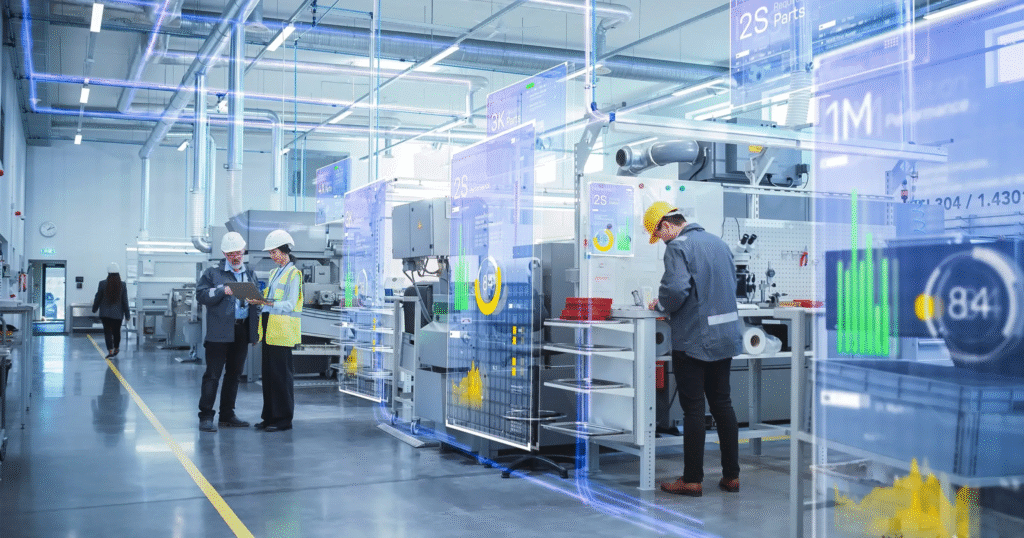
Car manufacturers are quietly exploring global platforms that will enable them to build smarter, better vehicles at prices lower than ever. Not only can these platforms be shared across hundreds of different models in a range of markets, but they also help drive down development costs while improving reliability.
As a result, even the low-cost car benefits from the R&D position of ten years ago in luxury cars only. The result, budget cars are better built, better tested, and more refined than ever before.
As to why our entry-level cars have never been quieter, smoother, or felt as solid as other older cars in their price category as they do today.
8. Smarter Design – Budget Doesn’t Mean Ugly

In 2025, automakers understand that buyers want their cars to look great, at any price. Designers are taking the design language from their premium counterparts and applying it to their affordable cars, and we are seeing some seriously good looking cars.
It is not just the Nissan March with its appealing headlights or the Proton Saga with its menacing grille but we are seeing none of the “cheap-looking” cars of decades past. Budget no longer means boring, and good design has never been more accessible.
9. Smarter Choices for Urban Living

More cities are becoming less spacious and petrol is remaining expensive, making the best decision in city living to choose small budget cars. Many of these small budget cars are, of course, small and therefore easy to park, cheap to insure, and simple to navigate through traffic.
Even better, many small budget cars are now available in electric or hybrid versions at prices we did not expect. For example, the 2025 Wuling Mini EV, or BYD Seagull is a great example of a budget, small and future car.
Conclusion: Cheap Is No Longer Dumb
In 2025, the term “budget” cars have changed. They’re smart, efficient, stylish, and, frankly, full of great features. Automakers understand that today’s customers are more aware, more demanding, and searching for the best value than ever before, and the budget car category has adjusted accordingly.
So, if you’re thinking about buying a budget car this year, don’t let the price play tricks on you. With all the smart features, engineering, and innovation put into them, the cheapest cars in 2025 might also be the smartest purchase on the market.

